
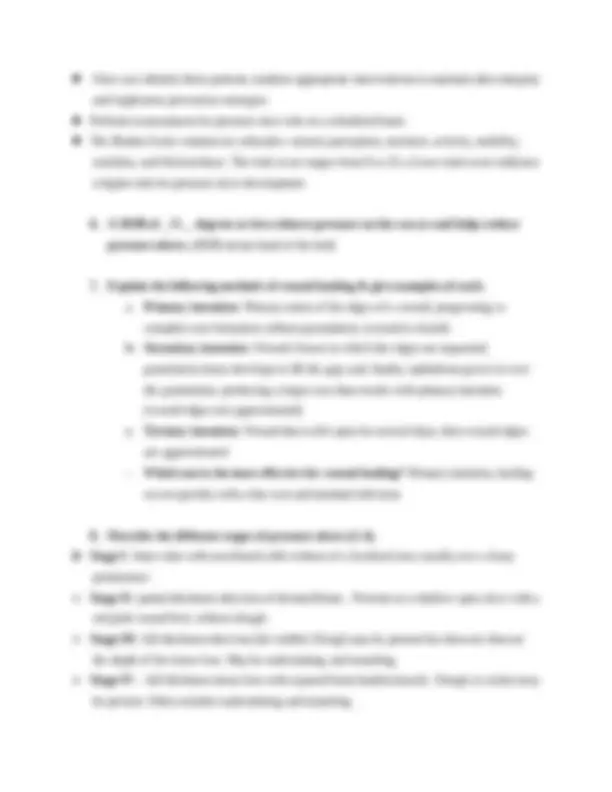
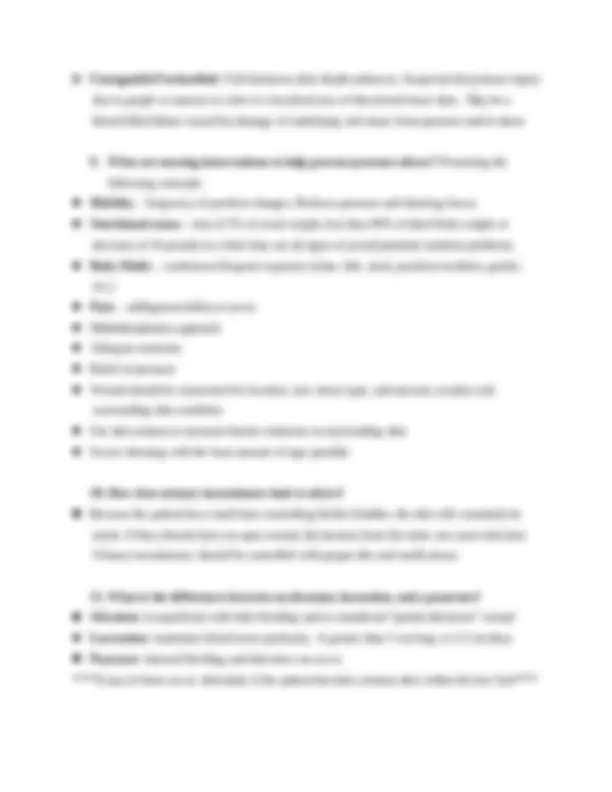
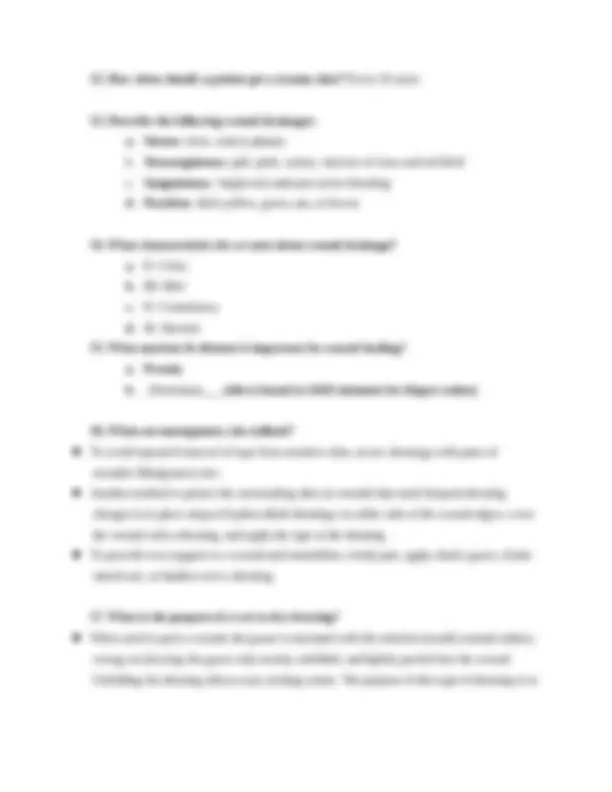
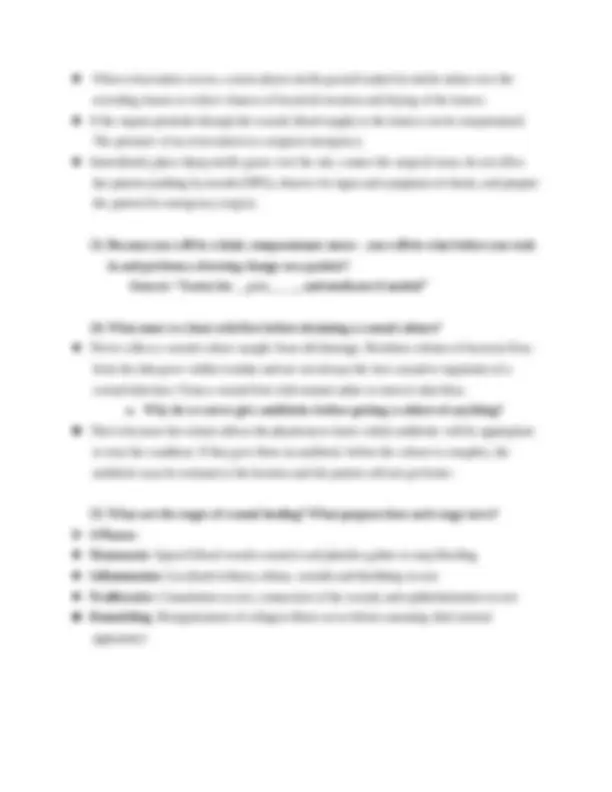
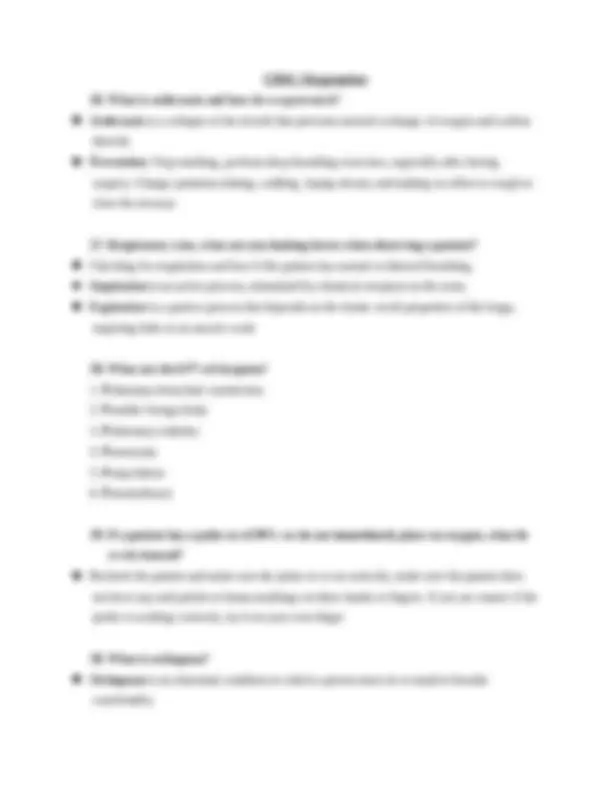
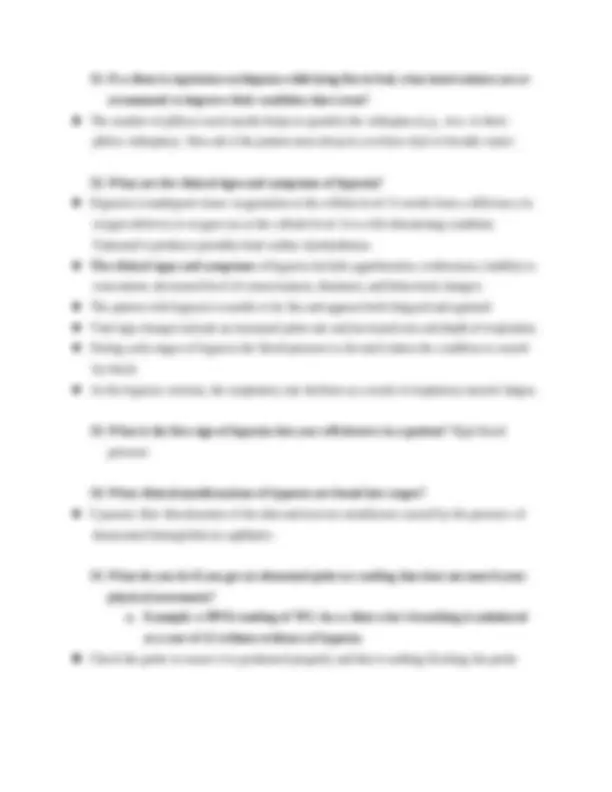
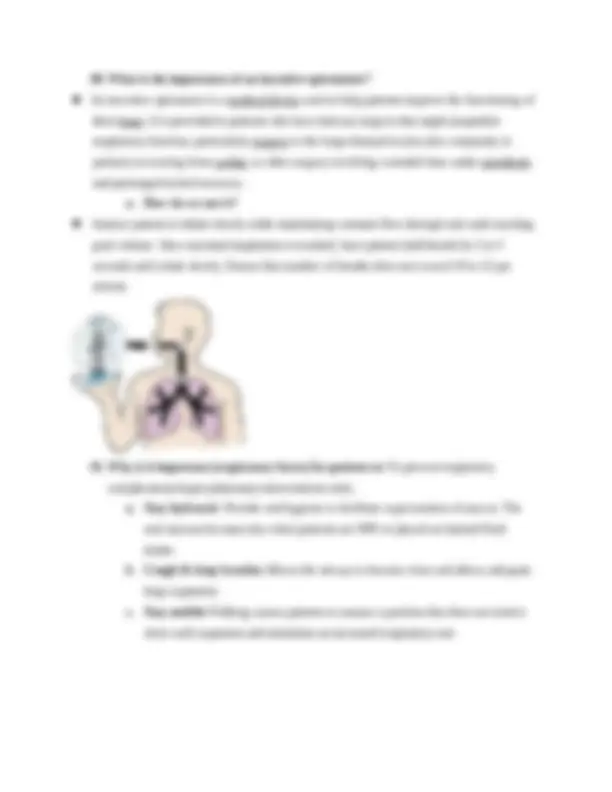
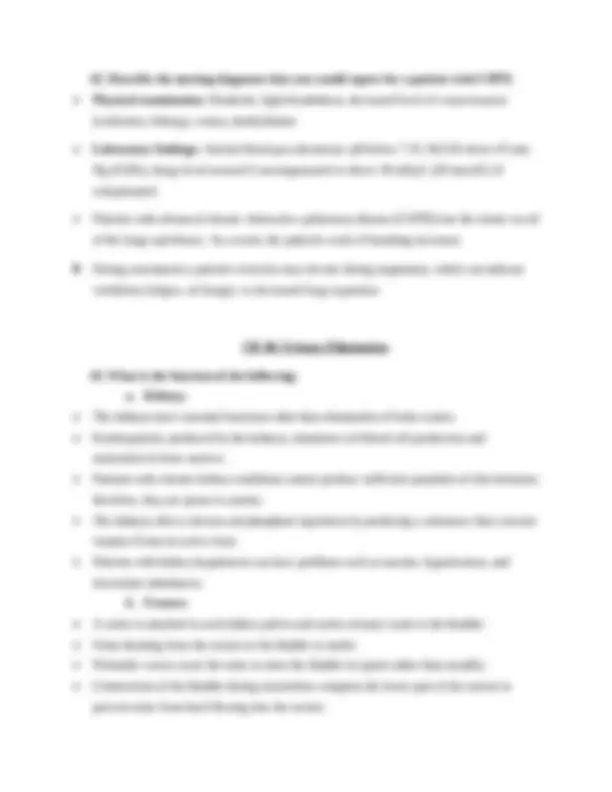
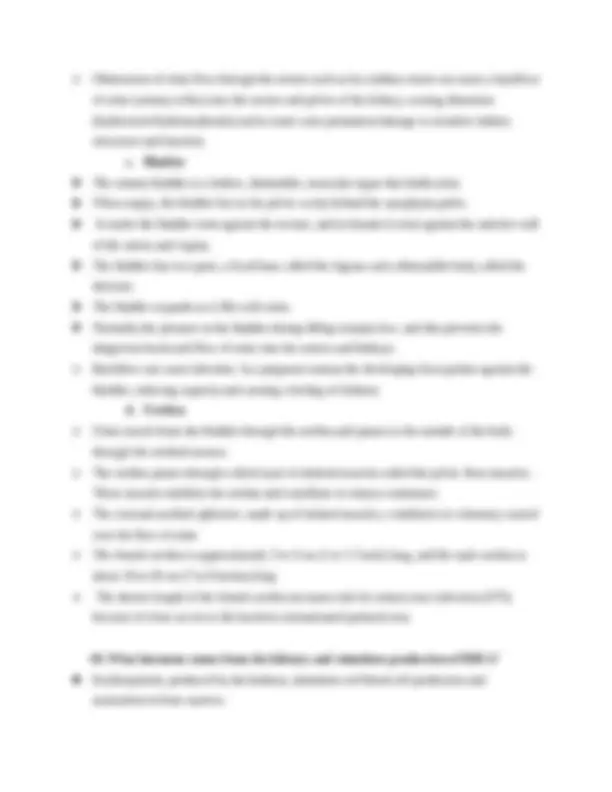
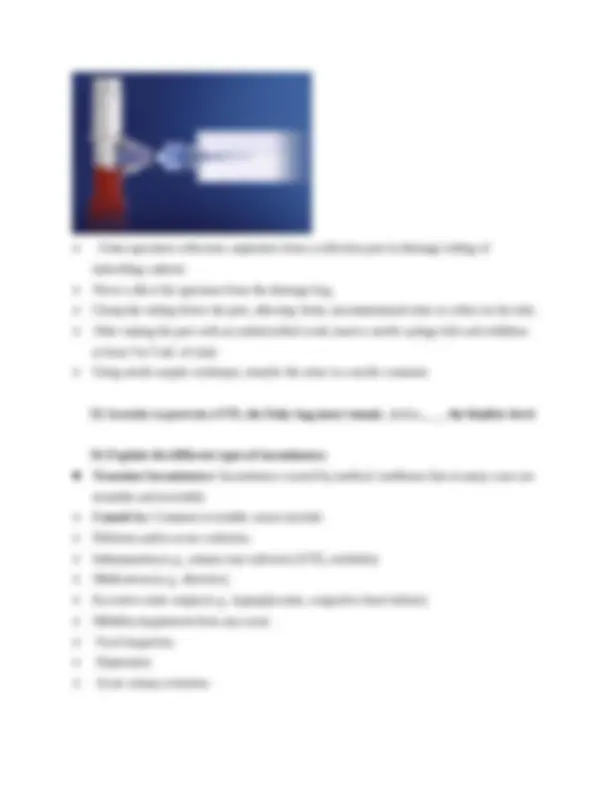
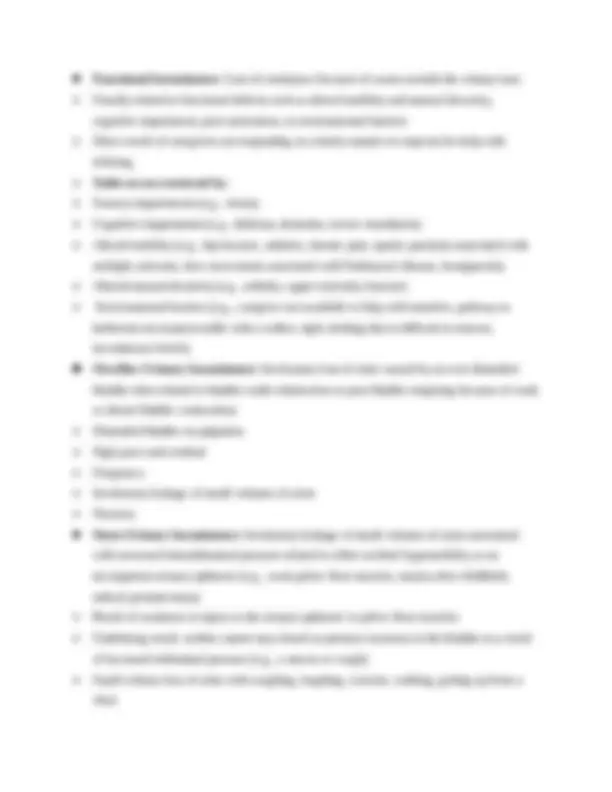
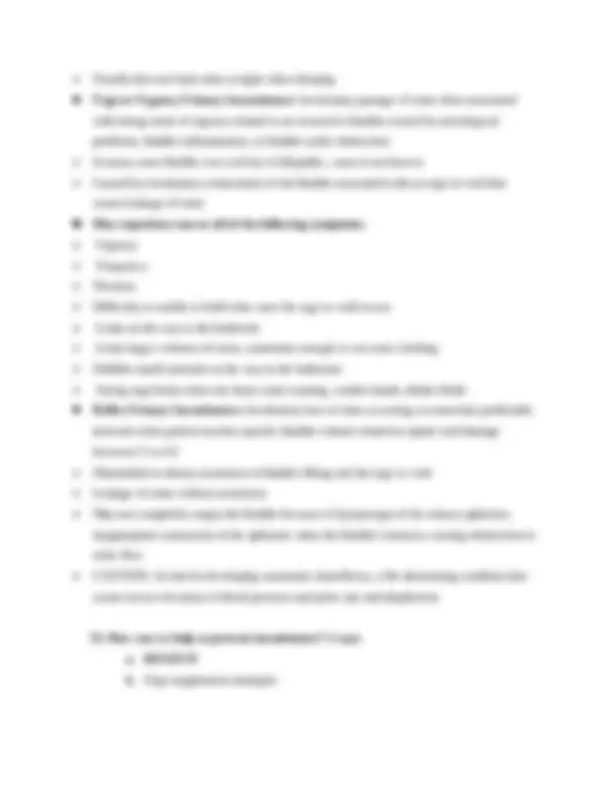
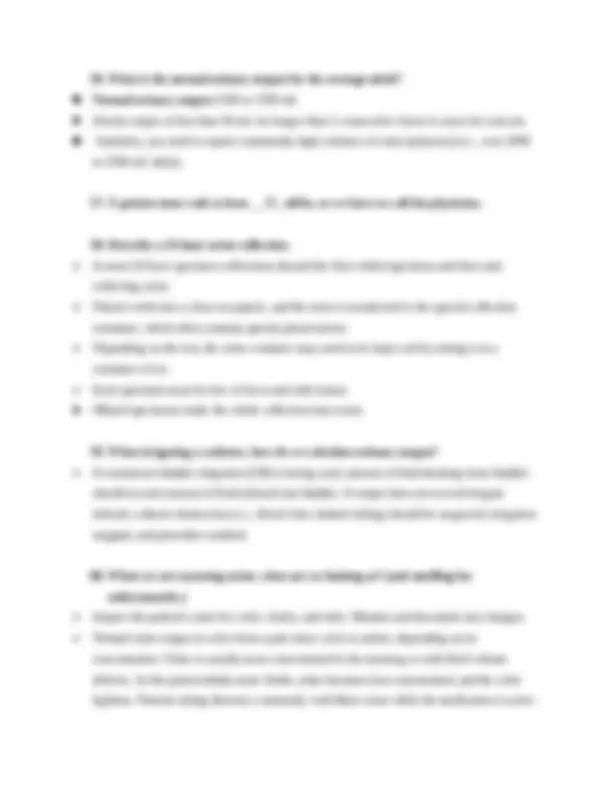
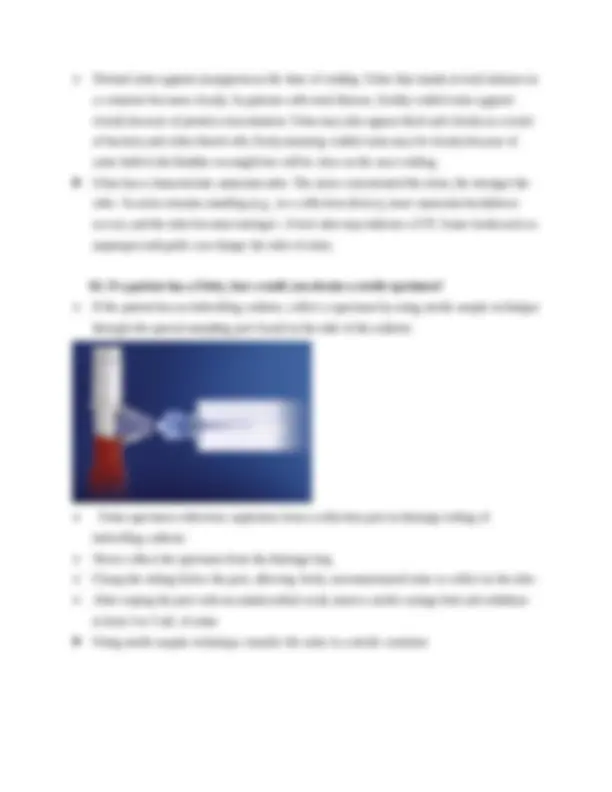
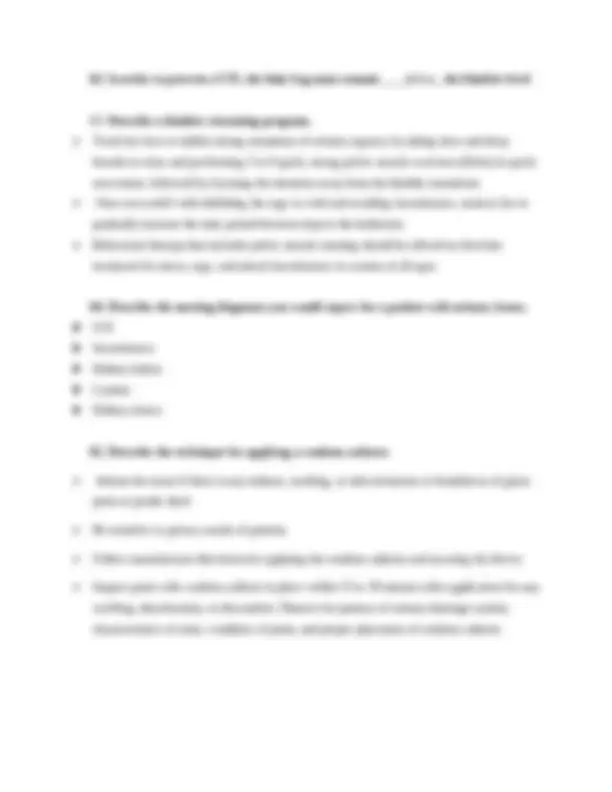


Study with the several resources on Docsity

Earn points by helping other students or get them with a premium plan


Prepare for your exams
Study with the several resources on Docsity

Earn points to download
Earn points by helping other students or get them with a premium plan
Community
Ask the community for help and clear up your study doubts
Discover the best universities in your country according to Docsity users
Free resources
Download our free guides on studying techniques, anxiety management strategies, and thesis advice from Docsity tutors
NR224 FUNDAMENTALS EXAM 2 STUDY GUIDE / NR 224 FUNDAMENTALS EXAM 2 STUDY GUIDE(New, 2024): CHAMBERLAIN COLLEGE OF NURSING(Verified,Download to score A)
Typology: Study Guides, Projects, Research
1 / 23

This page cannot be seen from the preview
Don't miss anything!
















CH 48: Skin Integrity and Wound Care
1. Describe the dermis and the epidermis. Dermis: The dermis, the inner layer of the skin, provides tensile strength; mechanical support; and protection for the underlying muscles, bones, and organs. It differs from the epidermis in that it contains mostly connective tissue and few skin cells. Collagen (a tough, fibrous protein), blood vessels, and nerves are found in the dermal layer. Fibroblasts, which are responsible for collagen formation, are the only distinctive cell type within the dermis. Epidermis: The epidermis, or the top layer, has several layers. The stratum corneum is the thin, outermost layer of the epidermis. It consists of flattened, dead, keratinized cells. The cells originate from the innermost epidermal layer, commonly called the basal layer. Cells in the basal layer divide, proliferate, and migrate toward the epidermal surface. After they reach the stratum corneum, they flatten and die. 1185This constant movement ensures replacement of surface cells sloughed during normal desquamation or shedding. 2. What are three pressure related factors that contribute to pressure ulcers? Why? Three pressure-related factors which contribute to pressure ulcer development: 1. Intensity 2. Duration 3. Tissue Tolerance These can be caused by: Major cause is PRESSURE! Impaired mobility Decreased/impaired sensory perception Fecal and/or urinary incontinence Poor nutrition Aging skin Presence of a cast
Alteration in the level of consciousness Moisture
3. Describe the following terms: a. Granulation tissue: Granulation tissue is red, moist tissue composed of new blood vessels, the presence of which indicates progression toward healing. b. Slough: Soft yellow or white tissue (stringy substance attached to wound bed), and it must be removed by a skilled clinician or with the use of an appropriate wound dressing before the wound is able to heal. c. Eschar: Black, brown, tan, or necrotic tissue,which needs to be removed before healing can proceed. d. Exudate: Fluid, cells, or other substances that have been discharged from cells or blood vessels slowly through small pores or breaks in cell membranes. e. Necrotic tissue: pertaining to the death of tissue in response to disease or injury. 4. Describe friction & shear. Friction: Effects of rubbing or the resistance that a moving body meets from the surface on which it moves; a force that occurs in a direction to oppose movement. Shear: Force exerted against the skin while the skin remains stationary and the bony structures move. Occurs when there is a change in position due to gravity. Muscle and bone slide in the direction of body movement. Tissue damage occurs deep in the tissues causing undermining of the dermis. It affects the epidermis/top layer of skin (unlike shear injuries). 5. What is the Braden scale and why do we use it? The interpretation of the meaning of the total numerical scores differs with each risk- assessment scale relevant to their population. Lower numerical scores on the Braden Scale indicate that the patient is at high risk for skin breakdown. A benefit of the predictive instruments is to increase a nurse's early detection of patients at greater risk for ulcer development.
Unstageable/Unclassified: Full thickness skin/-depth unknown. Suspected deep-tissue injury that is purple or maroon in color in a localized area of discolored intact skin. May be a blood-filled blister caused by damage of underlying soft tissue from pressure and/or shear
9. What are nursing interventions to help prevent pressure ulcers? Promoting the following concepts: Mobility – frequency of position changes. Reduces pressure and shearing forces Nutritional status – loss of 5% of usual weight, less than 90% of ideal body weight or decrease of 10 pounds in a brief time are all signs of actual/potential nutrition problems Body Fluids – continuous/frequent exposure (urine, bile, stool, purulent exudates, gastric, etc.) Pain – willingness/ability to move Multidisciplinary approach Adequate nutrients Relief of pressure Wound should be reassessed for location, size, tissue type, and amount, exudate and surrounding skin condition Use skin sealant or moisture-barrier ointment on surrounding skin Secure dressing with the least amount of tape possible 10. How does urinary incontinence lead to ulcers? Because the patient has a hard time controlling his/her bladder, the skin will constantly be moist. If they already have an open wound, the bacteria from the urine can cause infection. Urinary incontinence should be controlled with proper diet and medications. 11. What is the differences between an abrasion, laceration, and a puncture? Abrasion: is superficial with little bleeding and is considered “partial-thickness” wound Laceration: sometimes bleed more profusely. It greater than 5 cm long or 2.5 cm deep Puncture: internal bleeding and infection can occur. ****If any of these occur, determine if the patient has had a tetanus shot within the last 5yrs****
12. How often should a patient get a tetanus shot? Every 10 years 13. Describe the following wound drainages: a. Serous: clear, watery plasma b. Serosangineous: pale, pink, watery: mixture of clear and red fluid c. Sanguineous: bright red; indicates active bleeding d. Purulent: thick yellow, green, tan, or brown 14. What characteristics do we note about wound drainage? a. C: Color b. O: Odor c. C: Consistency d. A: Amount 15. What nutrient & element is important for wound healing? a. Protein b. _ Petrolatum **___ (this is found in A&D ointment for diaper rashes)
The hydrocolloid dressing is useful on shallow-to–moderately deep dermal ulcers. Hydrocolloid dressings cannot absorb the amount of drainage from heavily draining wounds, and some are contraindicated for use in full-thickness and infected wounds. Most hydrocolloids leave a residue in the wound bed that is easy to confuse with purulent drainage.
19. Describe a Jackson Pratt (JP) drain and when it is used? A Jackson-Pratt (JP) drain is a type of drain that is placed in an incision during surgery. The drain is made up of a hollow tube that is connected to an egg-shaped bulb. The hollow tube begins inside the incision and exits the body. Attached to the end of the tube outside of the body is the collection bulb. This bulb collects fluid from the incision a. Should the bulb be compressed or no? Why? The JP drain helps drain excess blood and fluid from under the skin and the incision site. When you squeeze the egg-shaped bulb, fluid is sucked out. If the bulb is not squeezed tightly, the fluid will not drain. 20. Describe a wound vac, how it works and when it is used. a device that helps in wound closure by applying localized negative pressure to draw the edges of a wound together **a. If it is sounding an alarm, always check for air leaks first!
When evisceration occurs, a nurse places sterile gauzed soaked in sterile saline over the extruding tissues to reduce chances of bacterial invasion and drying of the tissues. If the organs protrude through the wound, blood supply to the tissues can be compromised. The presence of an evisceration is a surgical emergency. Immediately place damp sterile gauze over the site, contact the surgical team, do not allow the patient anything by mouth (NPO), observe for signs and symptoms of shock, and prepare the patient for emergency surgery.
23. Because you will be a kind, compassionate nurse – you will do what before you rush in and perform a dressing change on a patient? Answer: “Assess for __ pain **_____, and medicate if needed”
31. If a client is experience orthopnea while lying flat in bed, what intervention can we recommend to improve their condition short term? The number of pillows used usually helps to quantify the orthopnea (e.g., two- or three- pillow orthopnea). Also ask if the patient must sleep in a recliner chair to breathe easier. 32. What are the clinical signs and symptoms of hypoxia? Hypoxia is inadequate tissue oxygenation at the cellular level. It results from a deficiency in oxygen delivery or oxygen use at the cellular level. It is a life-threatening condition. Untreated it produces possibly fatal cardiac dysrhythmias. The clinical signs and symptoms of hypoxia include apprehension, restlessness, inability to concentrate, decreased level of consciousness, dizziness, and behavioral changes. The patient with hypoxia is unable to lie flat and appears both fatigued and agitated. Vital sign changes include an increased pulse rate and increased rate and depth of respiration. During early stages of hypoxia the blood pressure is elevated unless the condition is caused by shock. As the hypoxia worsens, the respiratory rate declines as a result of respiratory muscle fatigue. 33. What is the first sign of hypoxia that you will observe in a patient? High blood pressure 34. What clinical manifestations of hypoxia are found late stages? Cyanosis, blue discoloration of the skin and mucous membranes caused by the presence of desaturated hemoglobin in capillaries 35. What do you do if you get an abnormal pulse ox reading that does not match your physical assessment? a. Example: a SPO2 reading of 76% for a client who’s breathing is unlabored at a rate of 12 without evidence of hypoxia Check the probe to ensure it is positioned properly and that is nothing blocking the probe
36. Who should receive a flu vaccine? Annual flu vaccines are recommended for all people 6 months and older. Patients with chronic illnesses (heart, lung, kidney, or immunocompromised), infants, older adults, and pregnant women can get very sick; thus they should be immunized. Close contacts of infants under 6 months should also be immunized. Seasonal flu vaccine protects against influenza viruses that research indicates will be the most common during that year. The vaccine is also recommended for people in close or frequent contact with anyone in the high-risk groups. 37. Who should receive the pneumonia vaccine? P neumococcal vaccine (PCV13) is routinely given to infants in a series of four doses and is recommended for patients at increased risk of developing pneumonia. This includes all adults over 65 years of age, those with chronic illnesses or who are immunocompromised (such as HIV/AIDS), any adult who smokes or has asthma, and those living in special environments such as nursing homes or long-term care facilities 38. What are the different oxygen devices? What liters per minute do they require? Which ones are used for oxygen support, which ones are used for oxygen and ventilation support? Delivery system O2 delivered Advantages Disadvantages Nasal cannula (low flow) 1-6 L/min: 24%-44% Safe and simple Easily tolerated Effective for low concentrations Does not impede eating or talking Inexpensive, disposable Unable to use with nasal obstruction Drying to mucous membranes Can dislodge easily May cause skin irritation or breakdown around ears or nares Patient's breathing pattern (mouth or nasal) affects
40. What is the importance of an incentive spirometer? An incentive spirometer is a medical device used to help patients improve the functioning of their lungs. It is provided to patients who have had any surgery that might jeopardize respiratory function, particularly surgery to the lungs themselves,but also commonly to patients recovering from cardiac or other surgery involving extended time under anesthesia and prolonged in-bed recovery. a. How do we use it? Instruct patient to inhale slowly while maintaining constant flow through unit until reaching goal volume. Once maximal inspiration is reached, have patient hold breath for 2 to 3 seconds and exhale slowly. Ensure that number of breaths does not exceed 10 to 12 per minute. 41. Why is it important (respiratory focus) for patients to: To prevent respiratory complications begin pulmonary interventions early. a. Stay hydrated: Provide oral hygiene to facilitate expectoration of mucus. The oral mucosa becomes dry when patients are NPO or placed on limited fluid intake. b. Cough & deep breathe: Allows the airway to become clear and allows adequate lung expansion c. Stay mobile: Walking causes patients to assume a position that does not restrict chest wall expansion and stimulates an increased respiratory rate.
42. Describe the nursing diagnoses that you would expect for a patient with COPD. Physical examination: Headache, light-headedness, decreased level of consciousness (confusion, lethargy, coma), dysrhythmias Laboratory findings: Arterial blood gas alterations: pH below 7.35, PaCO2 above 45 mm Hg (6 kPa), image level normal if uncompensated or above 26 mEq/L (26 mmol/L) if compensated Patients with advanced chronic obstructive pulmonary disease (COPD) lose the elastic recoil of the lungs and thorax. As a result, the patient's work of breathing increases. During assessment a patient's clavicles may elevate during inspiration, which can indicate ventilatory fatigue, air hunger, or decreased lung expansion. **CH 46: Urinary Elimination
45. How does renin increase your blood volume and blood pressure? The kidneys play a major role in blood pressure control via the renin-angiotensin system (i.e., release of aldosterone and prostacyclin) In times of renal ischemia (decreased blood supply), renin is released from juxtaglomerular cells. Renin functions as an enzyme to convert angiotensinogen (a substance synthesized by the liver) into angiotensin I. Angiotensin I is converted to angiotensin II in the lungs. Angiotensin II causes vasoconstriction and stimulates aldosterone release from the adrenal cortex. Aldosterone causes retention of water, which increases blood volume. The kidneys also produce prostaglandin E2 and prostacyclin, which help maintain renal blood flow through vasodilation. These mechanisms increase arterial blood pressure and renal blood flow 46. Describe the symptoms of cystitis (UTI). irritation of the bladder (cystitis) characterized by urgency, frequency, incontinence, suprapubic tenderness; and foul-smelling cloudy urine a. How do symptoms differ across the lifespan? Older adults may experience a change in mental status called delirium. In some cases there will be obvious blood in the urine (hematuria). If infection spreads to the upper urinary tract (pyelonephritis), patients may also experience fever, chills, diaphoresis, and flank pain 47. What are possible causes of a UTI? indwelling catheter any instrumentation of the urinary tract urinary retention urinary and fecal incontinence poor perineal hygiene practices.
Functional Incontinence: Loss of continence because of causes outside the urinary tract Usually related to functional deficits such as altered mobility and manual dexterity, cognitive impairment, poor motivation, or environmental barriers Direct result of caregivers not responding in a timely manner to requests for help with toileting Toilet access restricted by: Sensory impairments (e.g., vision). Cognitive impairments (e.g., delirium, dementia, severe retardation). Altered mobility (e.g., hip fracture, arthritis, chronic pain, spastic paralysis associated with multiple sclerosis, slow movements associated with Parkinson's disease, hemiparesis). Altered manual dexterity (e.g., arthritis, upper extremity fracture) Environmental barriers (e.g., caregiver not available to help with transfers, pathway to bathroom not maneuverable with a walker, tight clothing that is difficult to remove, incontinence briefs). Overflow Urinary Incontinence: Involuntary loss of urine caused by an over distended bladder often related to bladder outlet obstruction or poor bladder emptying because of weak or absent bladder contractions Distended bladder on palpation High post void residual Frequency Involuntary leakage of small volumes of urine Nocturia Stress Urinary Incontinence: Involuntary leakage of small volumes of urine associated with increased intraabdominal pressure related to either urethral hypermobility or an incompetent urinary sphincter (e.g., weak pelvic floor muscles, trauma after childbirth, radical prostatectomy) Result of weakness or injury to the urinary sphincter or pelvic floor muscles Underlying result: urethra cannot stay closed as pressure increases in the bladder as a result of increased abdominal pressure (e.g., a sneeze or cough) Small-volume loss of urine with coughing, laughing, exercise, walking, getting up from a chair
Usually does not leak urine at night when sleeping Urge or Urgency Urinary Incontinence: Involuntary passage of urine often associated with strong sense of urgency related to an overactive bladder caused by neurological problems, bladder inflammation, or bladder outlet obstruction In many cases bladder over activity is idiopathic; cause is not known Caused by involuntary contractions of the bladder associated with an urge to void that causes leakage of urine May experience one or all of the following symptoms: Urgency Frequency Nocturia Difficulty or unable to hold urine once the urge to void occurs Leaks on the way to the bathroom Leaks larger volumes of urine, sometimes enough to wet outer clothing Dribbles small amounts on the way to the bathroom Strong urge/leaks when one hears water running, washes hands, drinks fluids Reflex Urinary Incontinence: Involuntary loss of urine occurring at somewhat predictable intervals when patient reaches specific bladder volume related to spinal cord damage between C1 to S Diminished or absent awareness of bladder filling and the urge to void Leakage of urine without awareness May not completely empty the bladder because of dyssynergia of the urinary sphincter; inappropriate contraction of the sphincter when the bladder contracts, causing obstruction to urine flow CAUTION: At risk for developing autonomic dysreflexia, a life-threatening condition that causes severe elevation of blood pressure and pulse rate and diaphoresis
55. How can we help to prevent incontinence? 2 ways a. KEGELS! b. Urge-suppression strategies